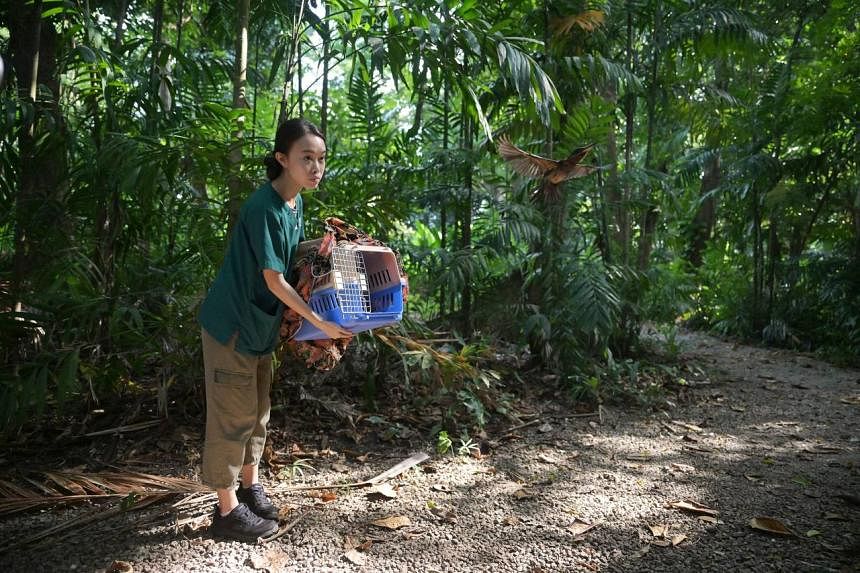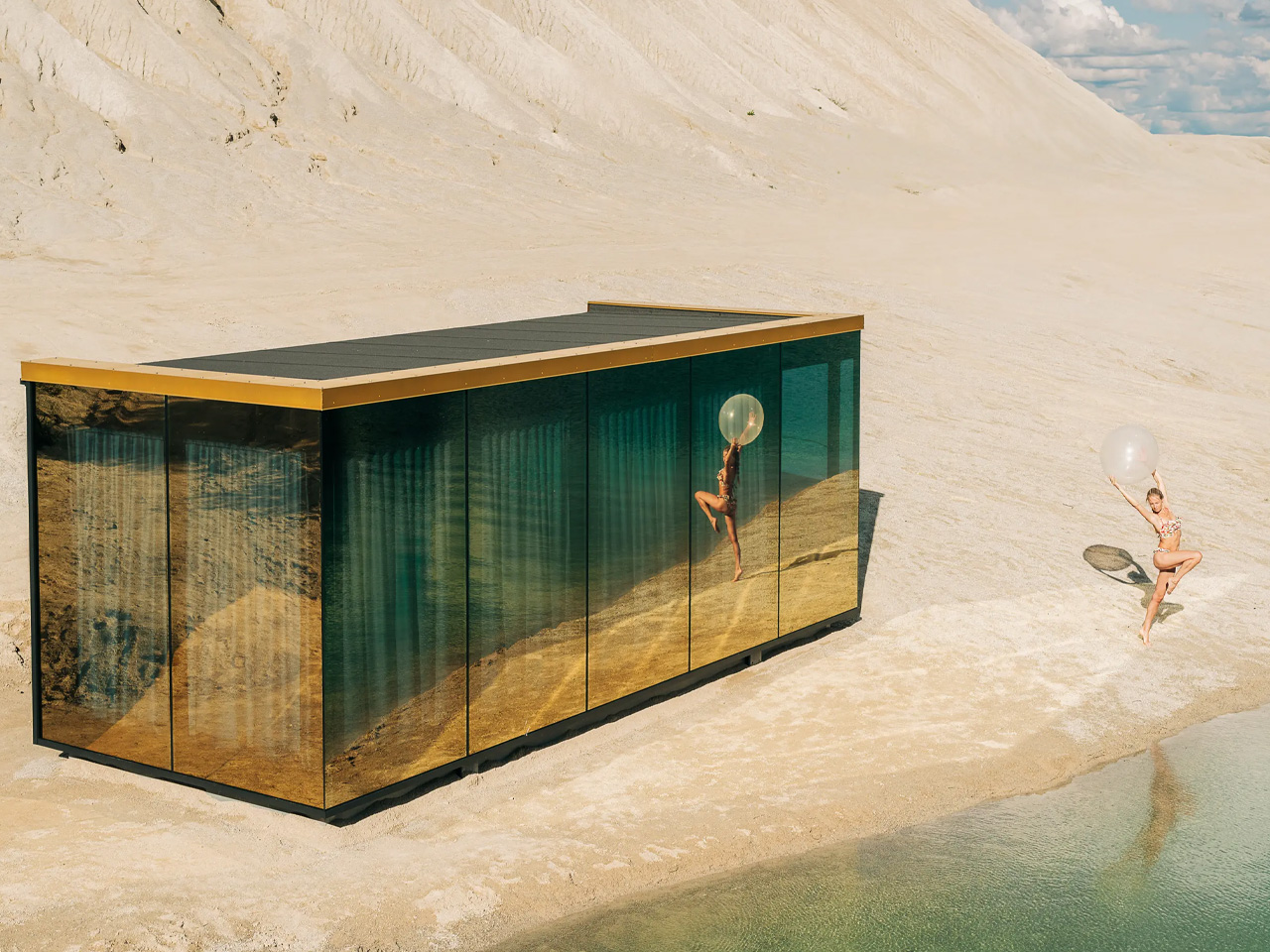SINGAPORE – Two collared kingfishers that survived the June 14 oil spill – the worst in Singapore in over a decade – have recovered well enough to be released back into the wild on July 26. The birds, with turquoise-blue feathers still stained black from the oil, took to the skies after receiving extensive care from wildlife rescuers for over a month. They have a high chance of surviving in the wild, said the rescuers who nursed them back to health.
Four kingfishers were rescued from different parts of Singapore after a dredging boat hit a bunker vessel and caused nearly 400 tonnes of fuel to be spilt into the waters. Two of the rescued kingfishers died shortly after. One survivor was treated at the National Parks Board’s (NParks) Centre for Wildlife Rehabilitation after being rescued on June 16.

The other was under the care of wildlife rescue group Animal Concerns Research and Education Society (Acres) after being saved on June 17. The bird cared for by NParks was released into a forested patch in East Coast Park, near where it was rescued. The collared kingfisher is the most common species of kingfisher in Singapore.
It can be found throughout the country, including in urban areas away from water. Dr Petrina Teo, veterinarian at NParks’ Centre for Wildlife Rehabilitation, said the board decided to release the kingfisher near the site where it was rescued because it is “the environment that it’s most familiar with, so it is most likely able to locate the necessary resources for survival”. Another reason is that “kingfishers are territorial and we do not want to reintroduce it back into an area where there is an existing kingfisher that has claimed that territory”, she added.
Early on the morning of July 26, Dr Teo had to chase the kingfisher around in its enclosure in order to catch it and bring it to the release site. “That’s actually a very good sign, because that’s what we want it to do in the wild, to be able to fly away from predators or people,” she said. Minister for National Development Desmond Lee had previously said that birds that survive oil spills typically require at least seven weeks to be nursed back to health.
Dr Teo, who had been looking after the kingfisher from the very start, said the bird’s recovery period was aligned with the estimated timeline. “It was a bit scary at the start because it was quite unstable and looked still quite weak. But it made a very quick recovery in the fourth or fifth week, when it started to eat by itself, and we noticed it was putting on weight and becoming more and more active,” said Dr Teo.
The kingfisher is now able to fly on its own from different perches at different heights, and forage for food such as worms and fish, she added. When water is poured on the back and front of the bird’s feathers, droplets roll off, indicating that its natural water repellent properties are being restored. This will allow the bird to fly even after diving into waters to hunt.
The coating was washed off in the process of cleaning crude oil off its feathers. The bird was taken to the release site in an animal carrier covered by a sarong to minimise noise and exposure to humans. Once the cage door was opened, it flew out immediately and perched on a high tree branch, taking a few minutes to preen its feathers and get used to its environment before flying off.
“That’s exactly what we expected when we released the bird back into the wild,” said Dr Teo, adding that NParks is hopeful the kingfisher will survive in the wild. Meanwhile, Acres took a different approach for the release of the kingfisher it cared for. Instead of transporting the bird back to Lazarus Island, where it was found, the animal rescue group released the bird on its premises in Sungei Tengah.
Acres co-chief executive Kalai Vanan Balakrishnan said: “To take a boat to the Southern Islands to transport the bird back will be very stressful for it. We had cases where birds can actually die from such an experience as well.” Lazarus Island is about a 40-minute boat ride from Marina South.
Mr Kalai added: “We decided to take a softer approach because Acres has the luxury of greenery all around us...
We have an abundance of fish in the rivers and the reservoirs around and a lot of other insects that the kingfishers prey on.” Acres will continue to leave food out for the bird as it transitions back into the wild and will monitor if it returns to the Acres premises, he said. He added it is the right time to release the bird back into the wild as it was getting stressed in captivity.
Moreover, the bird had strengthened its flight muscles over the weeks after it was moved into bigger enclosures and had more space to roam. “Its chances of survival are very high; they are very adaptable birds,” said Mr Kalai. Mr Lee said in a Facebook post on July 26: “We hope that the two kingfishers will do well back in their natural habitats.
” The minister also gave an update on the biodiversity surveys conducted by NParks and over 50 stakeholders, including institutes of higher learning and citizen science programme Intertidal Watch, to assess the oil spill’s impact. [Update on Collared Kingfishers]Happy to give an update on the Collared Kingfisher that has been under the care of..
. The surveys to record the types and numbers of species present were done at the Southern Islands, Labrador Nature Reserve, Sentosa, Changi Beach Park and Coney Island Park. More surveys will be carried out in the coming weeks.
“Based on the visual surveys conducted, oil was sighted along the upper intertidal zones of some of biodiversity-sensitive areas. While there are no significant impacts on our marine biodiversity and wildlife observed thus far, the situation remains dynamic and there could be a time lag between the oil spill and its effects on our biodiversity and habitats,” said Mr Lee. “Assessments on the environmental impact of the oil spill are still ongoing and we will continue to work with our partners to keep a close watch on the effects of the oil spill on our biodiversity.
”.


















